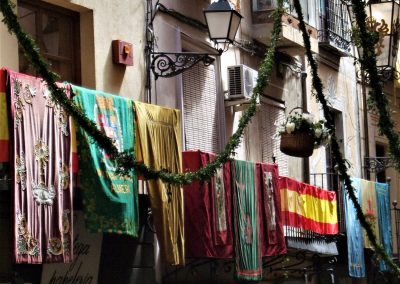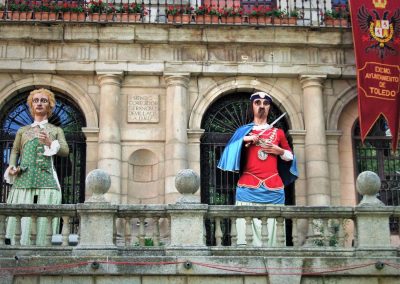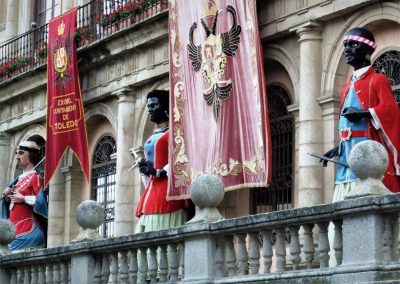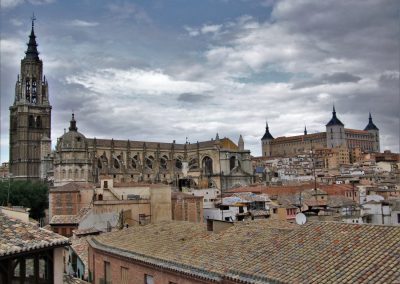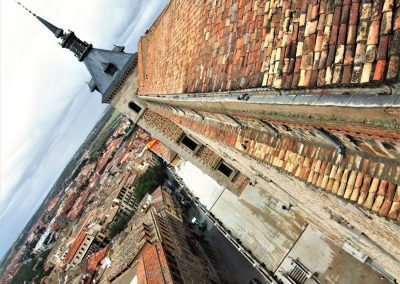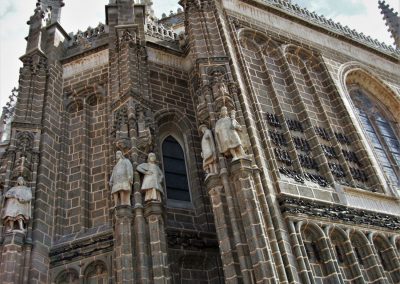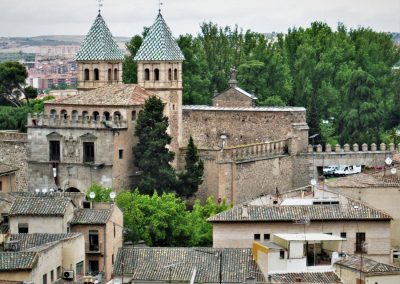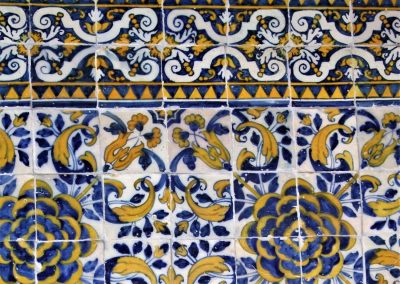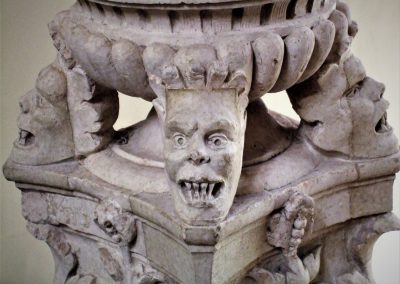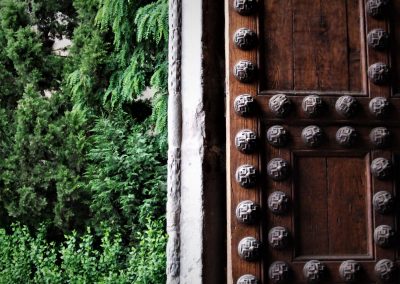- We left Madrid to spend two nights in Toledo before heading south to Andalucia.
- Toledo is an ancient city, beautifully situtated in a bend of the Tagus River and on a hill that rises above the plains of Castile-la Mancha in central Spain. It is known as the “City of the Three Cultures”, bearing traces of the influence of Christians, Muslims, and Jews. The Historic City of Toledo is a World Heritage site in recognition of this distinctive, polygot history.
- By chance we arrived when celebrations for the Feast of Corpus Christi were underway. There were eight giant puppets displayed across the facade of the Town Hall, including dark-skinned Moors. It seemed that Toledo’s polygot history continues to be celebrated in Christian Spain.
- The city’s skyline is dominated by the Cathedral and the Alcazar, both of which reflect Toledo’s fascinating history.
- The Gothic Cathedral you see today was built between 1226 and 1493. The site has been a place of worship since the Visigoths built a church there in 646. It was converted to a mosque during Moorish rule which lasted from 711 until 1085 when Alfonso VI captured the city as part of the reconquista. The mosque was subsequently destroyed.
- The caliph Abd ar-Rahman III built a fortress (al-qasr) on the Alcazar site in the 10th C which was altered when Christians retook the city in 1085. It was remodelled as a royal residence in the 1540s but the massive building became a ‘white elephant’ when the capital moved to Madrid. It was largely destoyed in the Spanish Civil War but General Franco had it rebuilt as a military museum.
- San Juan de los Reyes is a Franciscan monastery and church with a beautiful cloister. It was commissioned in 1477 by the Catholic monarchs Ferdinand and Isabella who had it built in the middle of the Jewish quarter as a mark of the supremacy of Catholicism in Spain. They’d planned to be buried here before capturing the greater prize of Granada where they are interred in the Capilla Real.
- Traces of Moorish architecture remain throughout the city though Islam itself was eradicated by the reconquista. The Mezquita de Cristo de la Luz is an 11th C mosque that was converted to a church, with great views over the north of the city. You can see the Puerta Nueva de Bisagra, a Moorish city gate that was remodelled in 1559.
- Museo de Santa Cruz was built in the early 16th C, just outside the Moorish city walls, and houses a great collection of ceramics and paintings.
- We found Toledo to be fabulous for a short stay.


